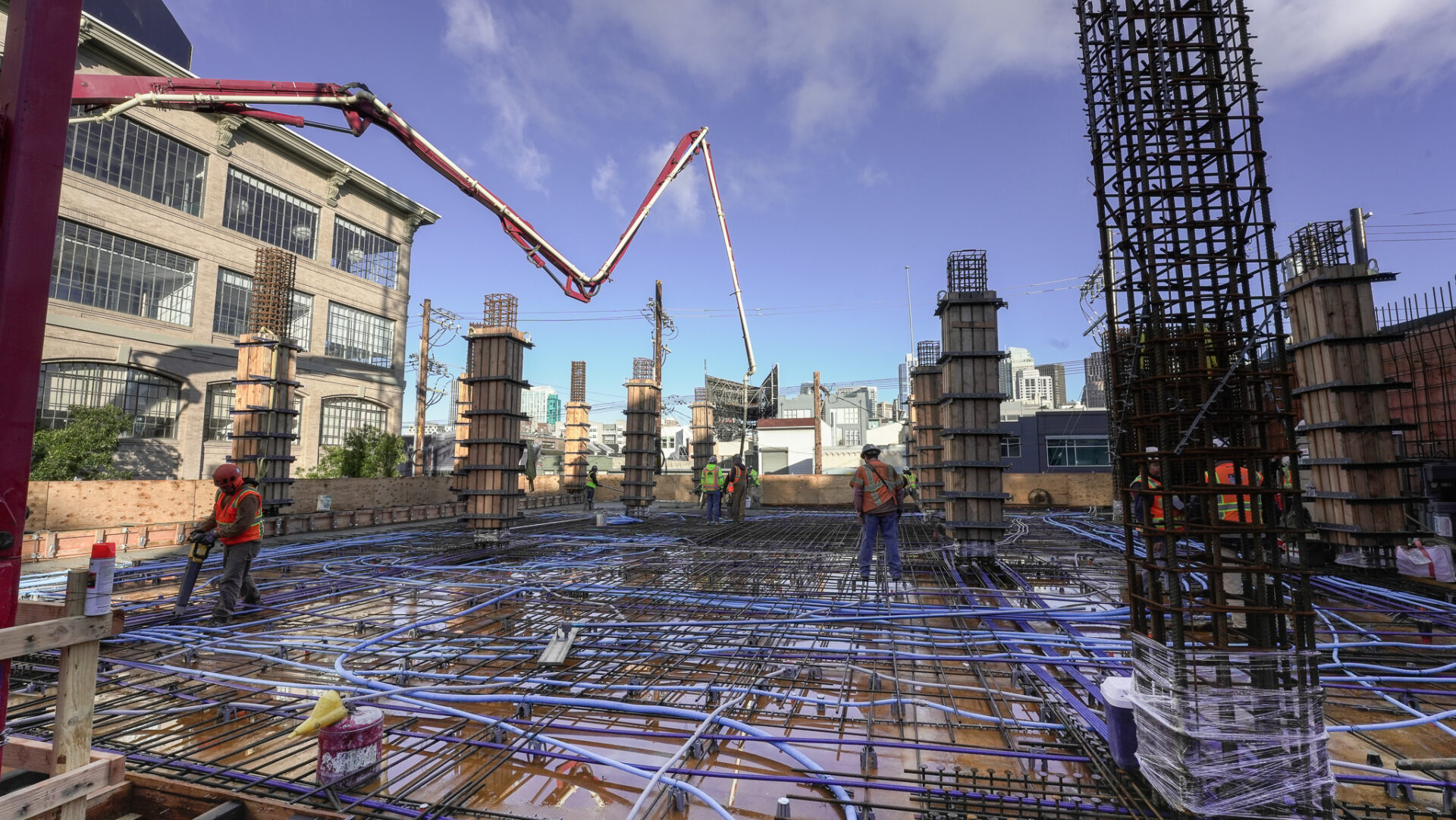Concrete Solutions
Using laser scanning on concrete can improve quality, avoid rework, and push the industry forward.
By Marty Martinez, Project Quality Manager
Installing concrete and achieving quality results involves a huge amount of coordination between many specialist trade partners. From the carpenters who install deck formwork to the teams who pour the concrete to finishers—it’s rewarding to watch a building rise deck by deck. But with so many steps dependent on each other, achieving consistent results on the first pass can be challenging.
As a Project Quality Manager at Swinerton, I’m always on the lookout for ways to eliminate the blind spots that seem unavoidable in concrete placement. Specifically, the time period during which horizontal work is placed and curing is full of uncertainty. Due to the lack of access to the deck itself during placement and a limited ability to check work, all the responsibility falls on the concrete finishing crew to ensure the final deck will be flat and level.
If the weather doesn’t cooperate or there’s human error, the remediation required can delay a project and have cascading effects on later construction.
Real-Time Data
Recent advances in laser scanning and point cloud analysis show promising developments in eliminating these blind spots. Often used in Virtual Design and Construction (VD&C) applications for 3D modeling, laser scanning can also be used in concrete placement. Through research and testing, we’ve found that scanning at three different stages can enhance quality by providing real-time data and benefits:
1. Pre-pour scanning using a 3D laser scanner can determine the correctness of concrete outlines for slab edge and vertical dowel locations, whether mechanical, electrical, and plumbing (MEP) penetrations are placed correctly, and if the deck form is at the correct elevation. With timely scan registrations and a 3D model delivered to teams, there is more time to make corrections between when the formwork is installed and the concrete is placed.
2. Wet scanning during a pour can determine whether the concrete surface is high or low. Real-time scans collected and analyzed while the concrete is wet enable the teams to adjust and correct—leading to less time spent grinding down or filling in areas after the concrete cures. By determining the best technology for our team to use with the quickest results, Swinerton has been able to achieve some of the highest floor flatness and floor levelness (FF/FL) scores our testers have ever seen on elevated concrete work.
3. Post-pour scanning enables verification of existing conditions and highly accurate as-builts. In addition, it can be used to document temporary conditions, such as before and after post-tension stressing, checking camber and elevations for deck forms, verification of support beam camber and deflection, and structural settling over time. With this information, teams can better mitigate issues that arise, especially when dealing with polished concrete finishes and subsequently installed flooring products with tight tolerances.
Advancing Our Results
Current technology and software limitations often affect how quickly scan results and data can be turned into deliverables for the installation teams. In the past year, we’ve seen numerous changes in software that make the process of real-time review more achievable. Tweaks like gradient color scaling applied to the scan data, stronger preregistration capabilities, faster scan data capture, and new software functions and features that improve the user interface when used for wet scanning applications all enhance the usability of the software.
An exciting development for Swinerton’s Quality Control and VD&C teams has been working directly with FARO, a company making laser scanners and scanning software. Our collaboration has helped develop their Flatness Check software platform into a far more functional application, achieving analysis of surface conditions in the short time frames that are required to stay ahead of the rapid pace of pour logistics.
Practical Applications
Through a pilot program with Swinerton’s Innovation Challenge on the 531 Bryant Project, our VD&C and Quality team developed a workflow process for pre-pour scanning and wet scanning. Over the course of constructing the six-story building, our small team experimented with the technology alongside industry experts in floor finishing and scanning. We learned valuable lessons about the most effective scanners, software, and methodologies.
While the installation teams were initially hesitant about bringing in a new technology in the middle of their workflow, the results we achieved and the improvements we made from floor to floor have proven that laser scanning, when used correctly, can enable the adjustment of high or low areas of wet concrete, as well as confirm FF/FL results ahead of thirdparty testing. It has also given us comprehensive as-built data that not only improves project documentation but also provides a deeper understanding of how concrete surface elevations are affected by the construction process.
All of this valuable information and implementation of technology has incredible potential to help Swinerton deliver even higher quality concrete work, as well as maintain its strong relationships with trade partners and teams through more consistent results during construction.
In the end, the goal is for concrete placement to introduce fewer variables and less unforeseen work by capturing good data and correcting work in the timeliest way.This exciting technology is driving our industry forward, and it will continue to demonstrate the exceptional work and quality of our Self-Perform Concrete division.



